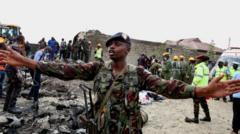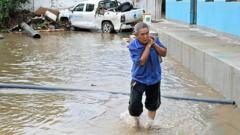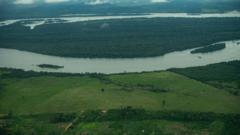In rural Africa, snakebites pose serious health risks, particularly for impoverished communities. Victims often face critical delays in treatment due to a lack of resources and insufficient antivenom availability, leading to tragic outcomes such as amputations.**
The Hidden Crisis of Snakebite Victims in Africa**

The Hidden Crisis of Snakebite Victims in Africa**
Millions suffer life-threatening snakebites in Africa, highlighting the urgent need for accessible medical care and awareness.**
In many rural regions of Africa, the danger of venomous snakes is an alarming reality that affects millions every year. While these incidents claim approximately 120,000 lives annually, the overwhelming majority of the victims are from low-income backgrounds, living in areas where medical treatment is hard to access. A recent medical case in Kenya spotlighted this pressing issue and underscored how the intersection of environmental changes and inadequate healthcare exacerbates the snakebite crisis.
Eleven-year-old Beatrice Ndanu Munyoki experienced a critical encounter with a snake while watching her family’s goats, resulting in a painful bite that would irreversibly change her life. Despite the immediate actions of her father, David Mutunga—who rushed her to a nearby hospital—medical facilities in the region were ill-equipped to handle the specific venom, leading to further complications. Eventually, Beatrice was transferred to a more capable hospital where she received antivenom, but not without severe consequences; her finger, severely damaged by the venom, was amputated.
The rising frequency of snake encounters is attributed to various factors including deforestation, urban expansion, and the effects of climate change, which disrupt the habitats shared by humans and snakes. This encroachment into wildlife territories not only increases the likelihood of snake bites but also places additional pressure on the healthcare systems, particularly in developing countries like Kenya, India, and Brazil.
Statistically, around five million people face snakebites each year, with countless more suffering the loss of limbs, body function, and affective health. The lack of awareness and the steep road to obtaining timely medical intervention create a dangerous cycle where victims are often left with life-altering injuries or even fatalities.
With improving education on snakebite prevention and implementing better access to medical care, communities can start to confront this urgent public health crisis head-on. The global response to snakebite management must prioritize the needs of these vulnerable populations to mitigate the potentially devastating impact of these often avoidable encounters.
Eleven-year-old Beatrice Ndanu Munyoki experienced a critical encounter with a snake while watching her family’s goats, resulting in a painful bite that would irreversibly change her life. Despite the immediate actions of her father, David Mutunga—who rushed her to a nearby hospital—medical facilities in the region were ill-equipped to handle the specific venom, leading to further complications. Eventually, Beatrice was transferred to a more capable hospital where she received antivenom, but not without severe consequences; her finger, severely damaged by the venom, was amputated.
The rising frequency of snake encounters is attributed to various factors including deforestation, urban expansion, and the effects of climate change, which disrupt the habitats shared by humans and snakes. This encroachment into wildlife territories not only increases the likelihood of snake bites but also places additional pressure on the healthcare systems, particularly in developing countries like Kenya, India, and Brazil.
Statistically, around five million people face snakebites each year, with countless more suffering the loss of limbs, body function, and affective health. The lack of awareness and the steep road to obtaining timely medical intervention create a dangerous cycle where victims are often left with life-altering injuries or even fatalities.
With improving education on snakebite prevention and implementing better access to medical care, communities can start to confront this urgent public health crisis head-on. The global response to snakebite management must prioritize the needs of these vulnerable populations to mitigate the potentially devastating impact of these often avoidable encounters.




















